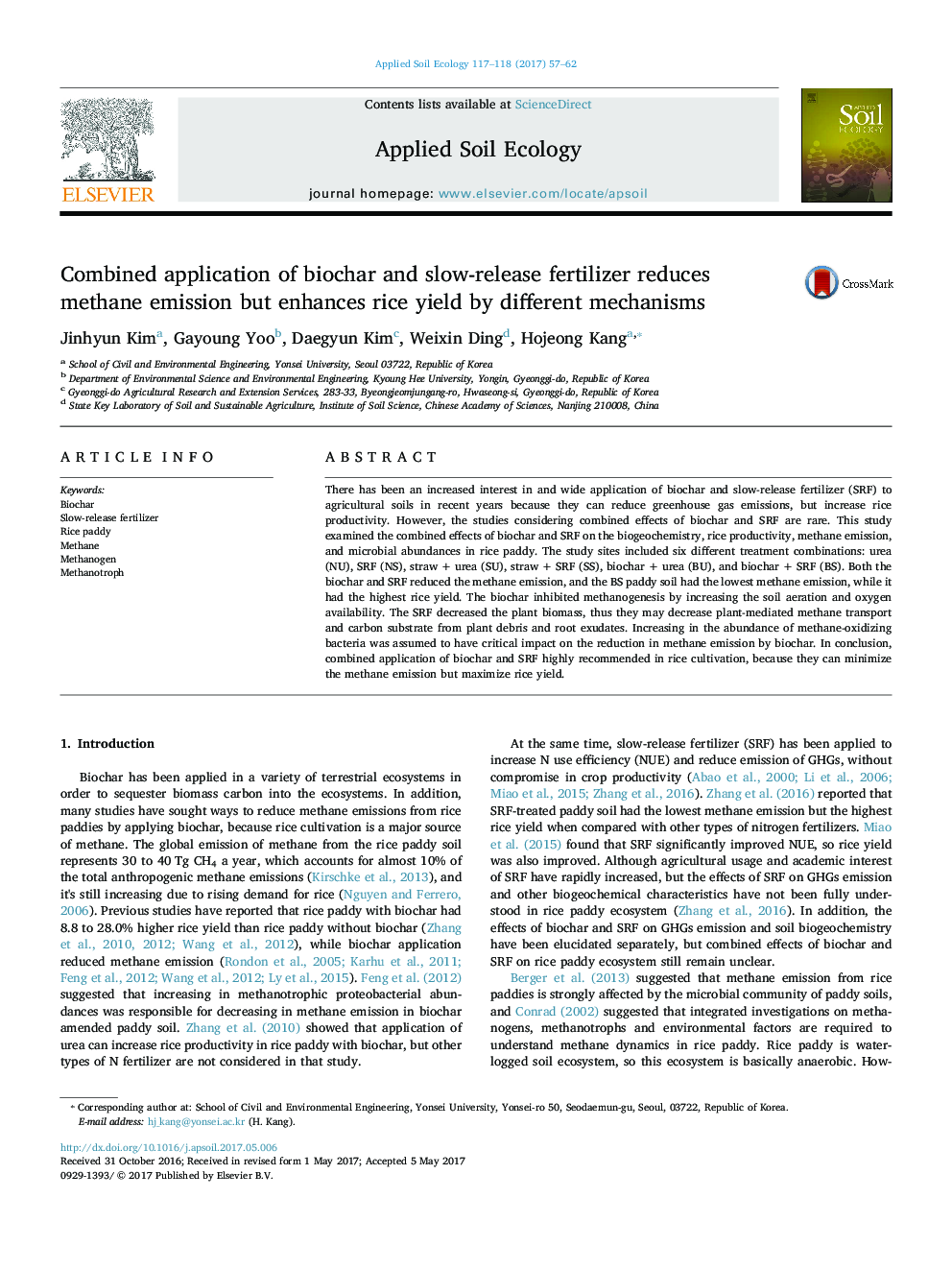| کد مقاله | کد نشریه | سال انتشار | مقاله انگلیسی | نسخه تمام متن |
|---|---|---|---|---|
| 5742662 | 1617766 | 2017 | 6 صفحه PDF | دانلود رایگان |
عنوان انگلیسی مقاله ISI
Combined application of biochar and slow-release fertilizer reduces methane emission but enhances rice yield by different mechanisms
ترجمه فارسی عنوان
کاربرد ترکیبی کود آلی و کود آهسته باعث کاهش انتشار متان می شود اما عملکرد برنج را با استفاده از مکانیزم های مختلف افزایش می دهد
دانلود مقاله + سفارش ترجمه
دانلود مقاله ISI انگلیسی
رایگان برای ایرانیان
کلمات کلیدی
موضوعات مرتبط
علوم زیستی و بیوفناوری
علوم کشاورزی و بیولوژیک
بوم شناسی، تکامل، رفتار و سامانه شناسی
چکیده انگلیسی
There has been an increased interest in and wide application of biochar and slow-release fertilizer (SRF) to agricultural soils in recent years because they can reduce greenhouse gas emissions, but increase rice productivity. However, the studies considering combined effects of biochar and SRF are rare. This study examined the combined effects of biochar and SRF on the biogeochemistry, rice productivity, methane emission, and microbial abundances in rice paddy. The study sites included six different treatment combinations: urea (NU), SRF (NS), straw + urea (SU), straw + SRF (SS), biochar + urea (BU), and biochar + SRF (BS). Both the biochar and SRF reduced the methane emission, and the BS paddy soil had the lowest methane emission, while it had the highest rice yield. The biochar inhibited methanogenesis by increasing the soil aeration and oxygen availability. The SRF decreased the plant biomass, thus they may decrease plant-mediated methane transport and carbon substrate from plant debris and root exudates. Increasing in the abundance of methane-oxidizing bacteria was assumed to have critical impact on the reduction in methane emission by biochar. In conclusion, combined application of biochar and SRF highly recommended in rice cultivation, because they can minimize the methane emission but maximize rice yield.
ناشر
Database: Elsevier - ScienceDirect (ساینس دایرکت)
Journal: Applied Soil Ecology - Volumes 117â118, September 2017, Pages 57-62
Journal: Applied Soil Ecology - Volumes 117â118, September 2017, Pages 57-62
نویسندگان
Jinhyun Kim, Gayoung Yoo, Daegyun Kim, Weixin Ding, Hojeong Kang,
